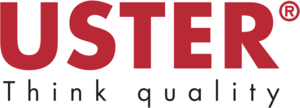For the development of new technologies and products, an efficient collaboration between USTER employees in Switzerland, US, China or India is key.
Roger Heckly works with data every day; He collects data, combines data, generates information and knowledge to then put it at disposal for his work colleagues. "I help my employer Uster Technologies AG, a leading Swiss manufacturer of measuring instruments for the textile industry, to get easier access to information and knowledge," says Heckly about his role in the company.
For Roger Heckly UsterNet was a catalyst for a cultural change.
As a key success factor, he sees above all a consciously chosen culture, which promotes collaboration between the globally distributed employees of USTER. "Five years ago, we began to change the way we work together, triggered by the introduction of the collaboration solution UsterNet, based on CoffeeNet and Microsoft SharePoint.”
New way of working - Top-down
Whether an employee works in Tennessee or in Suzhou, the company goals must be clear to everyone. This requires, in particular, a direct and easy accessible communication from the CEO. At the same time, there must be no obstacles to effective collaboration between employees in Switzerland, the USA, China or India. These were the objectives of the former CEO of USTER. He initiated the launch of UsterNet in 2011 and personally supported the worldwide roll-out of the platform during the two subsequent years.
"UsterNet was a catalyst for change. Because it was not enough to just log in to the new tool, we had to learn a new way of working that fit the digital world. In that sense, having the top management as a role model was extremely important", Heckly summaries his observations during that time.
Historically grown data silos between departments and locations, which too often hindered efficient collaboration, had no right to exist anymore. With the UsterNet, employees were able to create virtual collaboration rooms, so-called workspaces, independently and without IT support. The information stored therein is accessible to authorized persons at any time. "This independency as well as the dismantling of the silos had to be practiced again and again," says Heckly about the most important tasks after the rollout of UsterNet.
The global UsterNet started as an intranet, a uniform information platform and a hub for all workspaces. But that was only the beginning.
The digital transformation happens everywhere.
More services - Bottom-Up
"This cultural shift continues to affect us today," says Heckly. For USTER, a long-term oriented increase in productivity is a central requirement. "After the UsterNet became an integral part of our daily work and we slowly familiarized with the new way of working, many are now realizing what is still possible."
Little by little, while using UsterNet, each business unit identified additional areas for efficiency improvements. One example is process-specific knowledge management in global sourcing, product management, textile technology or research & development. Key information, which previously one only got via its own network, can now be found through a central search function.
"One of the main points was dealing with correct information from the ERP system," says Heckly. Almost in every process there is the opportunity to integrate data from the ERP system, for example key figures on customers, products or suppliers, through UsterNet in the daily work. "This allows employees to work faster and with the right information, of which the source is clearly defined. And this reduces the number of mistakes."
Another example is Microsoft OneNote. OneNote is now increasingly used as an additional collaboration tool, accessible via the UsterNet. The open format of OneNote complements the features of the libraries for structured document storage, task management or posting news. In informal 'brown bag training' sessions, employees were shown how collaboration can be more informal yet also more effective with the help of OneNote: employee meetings, minutes or brainstorming sessions, for example.
"Employees have realized that thanks to UsterNet and to changing their way of working, it is now easier to organize and structure the exchange of information , also in teams with colleagues who work on other continents."
Communication, training and role models
Change or adopting a new behavior, does not happen just like that. It needs explicit support from top management. It needs training. It needs communication. It needs ambassadors such as Roger Heckly, who recognize early on how a new tool and the right way of handling it can have a positive impact on one’s own work and the organization. "It is still in my interest to remind colleagues that no more documents are sent via e-mail, that there are better solutions for individual excel sheets in UsterNet, or that one can work very well with a search engine, as long as documents are properly tagged. The change of today means being ready for tomorrow - Heckly is convinced about that.





